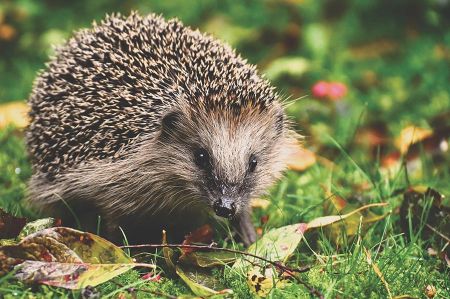Hedgehog offspring are in the nests - be careful when gardening
- Written by Portal Editor
The first hedgehog offspring are here! Around seven centimeters long, with around 100 soft spines hidden under the skin, blind, but already with five tiny claws on each paw - this means that there are usually four to five hedgehogs in the protected nest.
From June to September, our gardens and parks become nurseries for the animal of the year 2024. So that the young hedgehogs can grow up safely, we humans should pay particular attention to them when doing gardening: the new hedgehog family needs an undisturbed hiding place. By the way: female hedgehogs are single parents - the male hedgehog disappears immediately after mating.
Interesting facts about the history of hedgehogs
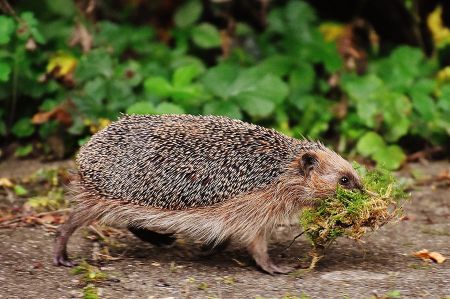 Hedgehogs were already kept as pets in ancient times. In medieval literature and art they are considered clever, sometimes sly or even demonic. A common myth said that in autumn they roll around on the ground under fruit trees and vines to impale the fruit on their spines and take it to their burrows for the winter. This claim was first documented by Pliny the Elder, but was also taken up by Plutarch and Timotheus of Gaza, and in the Middle Ages by Bartholomaeus Anglicus.
Hedgehogs were already kept as pets in ancient times. In medieval literature and art they are considered clever, sometimes sly or even demonic. A common myth said that in autumn they roll around on the ground under fruit trees and vines to impale the fruit on their spines and take it to their burrows for the winter. This claim was first documented by Pliny the Elder, but was also taken up by Plutarch and Timotheus of Gaza, and in the Middle Ages by Bartholomaeus Anglicus.
In the early Christian natural science of Physiologus, this alleged property of the animals was used for a religious metaphor that found its way into various medieval bestiaries: the hedgehog represents the devil, who roams around the Lord's vineyard and wants to steal as many of God's "fruits" - i.e. believing Christians - from it as possible.
 Some species of hedgehogs were even hunted for folk medicine or superstitious reasons; but they were never threatened with extinction. White-bellied dwarf hedgehogs are now kept as pets in some places.
Some species of hedgehogs were even hunted for folk medicine or superstitious reasons; but they were never threatened with extinction. White-bellied dwarf hedgehogs are now kept as pets in some places.
Hot, dry summers in Europe (2018, 2019 and 2020, due to global warming) promote the death of insects; in many places, the soil is dry and hard as a result. The number of hedgehogs in Germany, Great Britain (the "motherland of hedgehog research") and other countries has declined significantly since the mid-1990s. The heavy use of pesticides also harms hedgehogs, as it does all living things.
Lifestyle and diet of hedgehogs
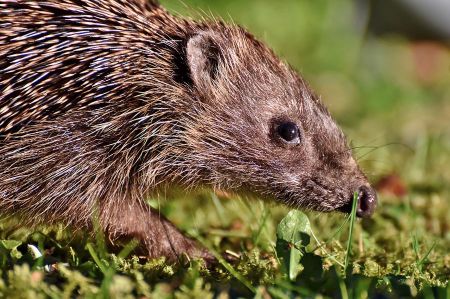 Hedgehogs primarily eat invertebrates, such as insects and their larvae, as well as annelids or snails. However, worms and snails are only a stopgap measure when there is a lack of food, as they transmit pathogens and can therefore be dangerous for hedgehogs. Hedgehogs also hunt small vertebrates and eat carrion. Occasionally they also accidentally eat plant material, such as fruit, but are unable to digest it. Contrary to popular claims, hedgehogs do not eat apples and mushrooms, but at most search for edible animals such as maggots.
Hedgehogs primarily eat invertebrates, such as insects and their larvae, as well as annelids or snails. However, worms and snails are only a stopgap measure when there is a lack of food, as they transmit pathogens and can therefore be dangerous for hedgehogs. Hedgehogs also hunt small vertebrates and eat carrion. Occasionally they also accidentally eat plant material, such as fruit, but are unable to digest it. Contrary to popular claims, hedgehogs do not eat apples and mushrooms, but at most search for edible animals such as maggots.
The claim that hedgehogs store their food supplies on their spines is also false. Although leaves or fruit are sometimes found impaled on their backs, the hedgehogs do not feed on them. They ingest this ballast unintentionally, for example in their nest, and show little enthusiasm for removing it.
That's why protecting hedgehogs is important
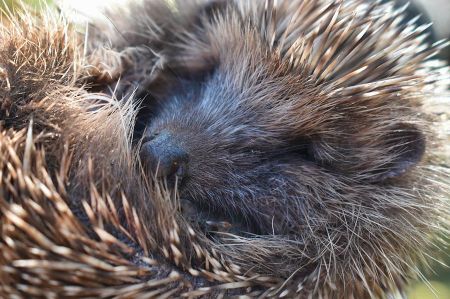 All gardening work under hedges, bushes, in wild corners or where there are piles of leaves and dead wood should now be carried out with particular care or even left alone. This is because the hedgehogs' nests are well hidden here. However, as soon as the mother hedgehog feels disturbed by outside disturbances, she may leave the nest. Then the offspring, which is suckled for the first six weeks, will starve to death. "If a nest is damaged or destroyed by the use of gardening tools, the hedgehogs can be fatally injured," explains Lea-Carina Mendel, nature and species conservationist at the German Wildlife Foundation.
All gardening work under hedges, bushes, in wild corners or where there are piles of leaves and dead wood should now be carried out with particular care or even left alone. This is because the hedgehogs' nests are well hidden here. However, as soon as the mother hedgehog feels disturbed by outside disturbances, she may leave the nest. Then the offspring, which is suckled for the first six weeks, will starve to death. "If a nest is damaged or destroyed by the use of gardening tools, the hedgehogs can be fatally injured," explains Lea-Carina Mendel, nature and species conservationist at the German Wildlife Foundation.
Hand tools such as hedge trimmers, rakes and brooms are therefore more suitable than machines during the birthing and rearing period. "If you discover a nest, you can react much more quickly and protect the animals from harm," says Mendel. It should now be a given that robotic lawnmowers are not used at dusk or at night to protect hedgehogs.
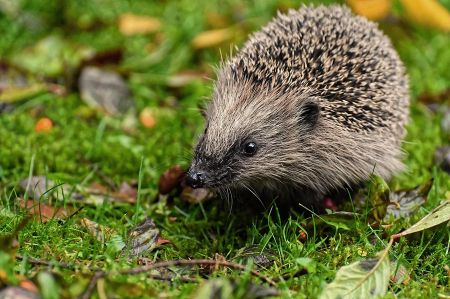 At around three to four weeks, the hedgehogs are independent. They leave their nest and go on short trips through the gardens. Their milk teeth grow. Hedgehogs have a strong sense of smell and can smell their prey from many metres away. The hedgehogs now learn what is edible.
At around three to four weeks, the hedgehogs are independent. They leave their nest and go on short trips through the gardens. Their milk teeth grow. Hedgehogs have a strong sense of smell and can smell their prey from many metres away. The hedgehogs now learn what is edible.
They rummage through compost and leaf piles for beetles, caterpillars, insect larvae and worms and also eat discarded food scraps next to rubbish bins. "Sometimes a young hedgehog loses track of all the culinary temptations and can no longer find its way back to the nest. It then calls for its mother with soft squeaking sounds," says Mendel. The mother hedgehog hears the cries for help, hurries over, panting, and collects her lost garden wanderer.
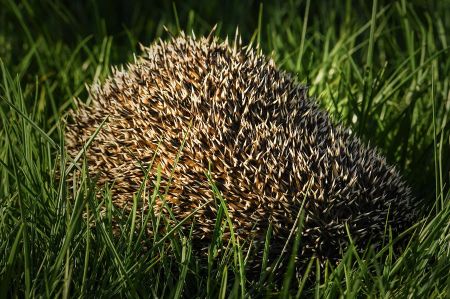 It can also happen that a lost young hedgehog sits on the lawn during the day. "This can make you suspicious, as hedgehogs are almost always active at dusk and at night - but as a rule, this day visitor is not an orphan, but goes on its own way or is picked up by the female hedgehog," says the conservationist. At around five to six weeks, hedgehog babies weigh around 250 grams and are independent of their mother and move around as loners.
It can also happen that a lost young hedgehog sits on the lawn during the day. "This can make you suspicious, as hedgehogs are almost always active at dusk and at night - but as a rule, this day visitor is not an orphan, but goes on its own way or is picked up by the female hedgehog," says the conservationist. At around five to six weeks, hedgehog babies weigh around 250 grams and are independent of their mother and move around as loners.
You can find more information about hedgehog-friendly gardens here: Hedgehogs - clear the way for those with quills (https://bit.ly/bahnfrei-fuer-den-igel).
In cooperation with: Jenifer Calvi / Press Officer
German Wildlife Foundation
Christoph-Probst-Weg 4
20251 Hamburg
Please read as well:
